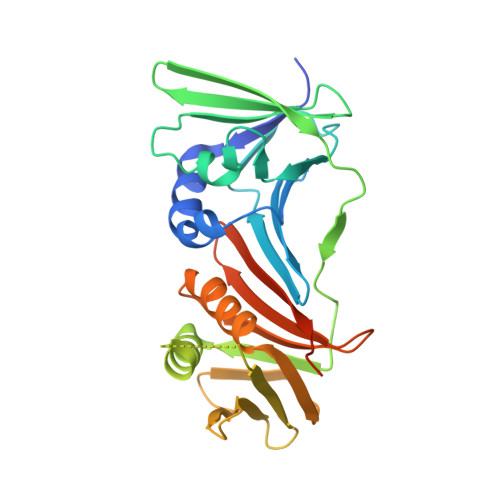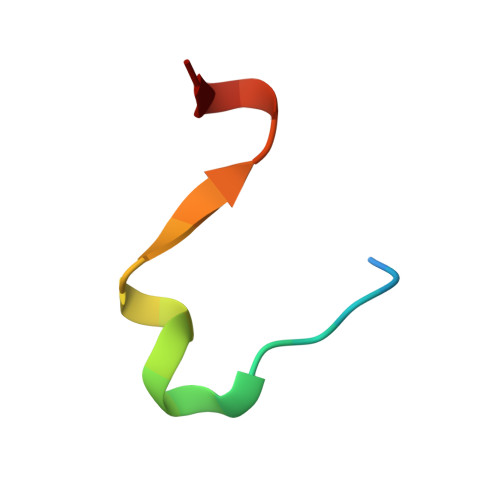Crystal structure of the cytomegalovirus DNA polymerase subunit UL44 in complex with the C terminus from the catalytic subunit. Differences in structure and function relative to unliganded UL44.
Appleton, B.A., Brooks, J., Loregian, A., Filman, D.J., Coen, D.M., Hogle, J.M.(2006) J Biological Chem 281: 5224-5232
- PubMed: 16371349
- DOI: https://doi.org/10.1074/jbc.M506900200
- Primary Citation of Related Structures:
1YYP - PubMed Abstract:
The human cytomegalovirus DNA polymerase is composed of a catalytic subunit, UL54, and an accessory protein, UL44, which has a structural fold similar to that of other processivity factors, including herpes simplex virus UL42 and homotrimeric sliding clamps such as proliferating cell nuclear antigen. Several specific residues in the C-terminal region of UL54 and in the "connector loop" of UL44 are required for the association of these proteins. Here, we describe the crystal structure of residues 1-290 of UL44 in complex with a peptide from the extreme C terminus of UL54, which explains this interaction at a molecular level. The UL54 peptide binds to structural elements similar to those used by UL42 and the sliding clamps to associate with their respective binding partners. However, the details of the interaction differ from those of other processivity factor-peptide complexes. Crucial residues include a three-residue hydrophobic "plug" from the UL54 peptide and Ile(135) of UL44, which forms a critical intramolecular hydrophobic anchor for interactions between the connector loop and the peptide. As was the case for the unliganded UL44 structure, the UL44-peptide complex forms a head-to-head dimer that could potentially form a C-shaped clamp on DNA. However, the peptide-bound structure displays subtle differences in the relative orientation of the two subdomains of the protein, resulting in a more open clamp, which we predicted would affect its association with DNA. Indeed, filter binding assays revealed that peptide-bound UL44 binds DNA with higher affinity. Thus, interaction with the catalytic subunit appears to affect both the structure and function of UL44.
- Department of Biological Chemistry and Molecular Pharmacology, Harvard Medical School, Boston, Massachusetts 02115, USA.
Organizational Affiliation:



















